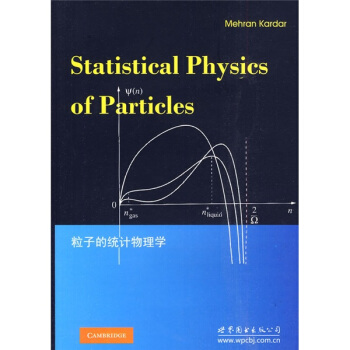![群論導論(第4版)(英文版) [An Introduction to the Theory of Groups]](https://pic.tinynews.org/10184591/0899ce80-e4c2-49b6-9e6f-4daa065c4793.jpg)

具體描述
內容簡介
《群論導論(第4版)(英文版)》介紹瞭:Group Theory is a vast subject and, in this Introduction (as well as in theearlier editions), I have tried to select important and representative theoremsand to organize them in a coherent way. Proofs must be clear, and examplesshould illustrate theorems and also explain the presence of restrictive hypo-theses. ! also believe that some history should be given so that one canunderstand the origin of problems and the context in which the subjectdeveloped. Just as each of the earlier editions differs from the previous one in a signifi-cant way, the present (fourth) edition is genuinely different from the third.Indeed, this is already apparent in the Table of Contents. The book nowbegins with the unique factorization of permutations into disjoint cycles andthe parity of permutations; only then is the idea of group introduced. This isconsistent with the history of Group Theory, for these first results on permu-tations can be found in an 1815 paper by Cauchy, whereas groups of permu-tations were not introduced until 1831 (by Galois)But even if history目錄
Preface to the Fourth EditionFrom Preface to the Third Edition
To the Reader
CHAPTER 1 Groups and Homomorphisms
Permutations
Cycles
Factorization into Disjoint Cycles
Even and Odd Permutations
Semigroups
Groups
Homomorphisms
CHAPTER 2 The Isomorphism Theorems
Subgroups
Lagranges Theorem
Cycic Groups
Normal Subgroups
Quotient Groups
The Isomorphism Theorems
Correspondence Theorem
Direct Products
CHAPTER 3 Symmetric Groups and G-Sets
Conjugates
Symmetric Groups
The Simplicity of A.
Some Representation Theorems
G-Sets
Counting Orbits
Some Geometry
CHAPTER 4 The Sylow Theorems
p-Groups
The Sylow Theorems
Groups of Small Order
CHAPTER 5 Normal Series
Some Galois Theory
The Jordan-Ho1der Theorem
Solvable Groups
Two Theorems of P. Hall
Central Series and Nilpotent Groups
p-Groups
CHAPTER 6 Finite Direct Products
The Basis Theorem
The Fundamental Theorem of Finite Abelian Groups
Canonical Forms; Existence
Canonical Forms; Uniqueness
The KrulI-Schmidt Theorem
Operator Groups
CHAPTER 7 Extensions and Cohomology
The Extension Problem
Automorphism Groups
Semidirect Products
Wreath Products
Factor Sets
Theorems of Schur-Zassenhaus and GaschiJtz
Transfer and Burnsides Theorem
Projective Representations and the Schur Multiplier
Derivations
CHAPTER 8
Some Simple Linear Groups
Finite Fields
The General Linear Group
PSL(2, K)
PSL(m, K)
Classical Groups
CHAPTER 9
Permutations and the Mathieu Groups
Multiple Transitivity
Primitive G-Sets
Simplicity Criteria
Atline Geometry
Projeetive Geometry
Sharply 3-Transitive Groups
Mathieu Groups
Steiner Systems
CHAPTER 10
Abelian Groups
Basics
Free Abelian Groups
Finitely Generated Abelian Groups
Divisible and Reduced Groups
Torsion Groups
Subgroups of
Character Groups
CHAPTER 11
Free Groups and Free Products
Generators and Relations
Semigroup Interlude
Coset Enumeration
Presentations and the Schur Multiplier
Fundamental Groups of Complexes
Tietzes Theorem
Covering Complexes
The Nielsen Schreier Theorem
Free Products
The Kurosh Theorem
The van Kampen Theorem
Amalgams
HNN Extensions
CHAPTER 12
The Word Problem
Introduction
Turing Machines
The Markov-Post Theorem
The Novikov-Boone-Britton Theorem: Sufficiency of Boones
Lemma
Cancellation Diagrams
The Novikov-Boone-Britton Theorem: Necessity of Boones
Lemma
The Higman Imbedding Theorem
Some Applications
Epilogue
APPENDIX I
Some Major Algebraic Systems
APPENDIX II
Equivalence Relations and Equivalence Classes
APPENDIX Ill
Functions
APPENDIX IV
Zorns Lemma
APPENDIX V
Countability
APPENDIX VI
Commutative Rings
Bibliography
Notation
Index
前言/序言
Group Theory is a vast subject and, in this Introduction (as well as in theearlier editions), I have tried to select important and representative theoremsand to organize them in a coherent way. Proofs must be clear, and examplesshould illustrate theorems and also explain the presence of restrictive hypo-theses. ! also believe that some history should be given so that one canunderstand the origin of problems and the context in which the subjectdeveloped. Just as each of the earlier editions differs from the previous one in a signifi-cant way, the present (fourth) edition is genuinely different from the third.Indeed, this is already apparent in the Table of Contents. The book nowbegins with the unique factorization of permutations into disjoint cycles andthe parity of permutations; only then is the idea of group introduced. This isconsistent with the history of Group Theory, for these first results on permu-tations can be found in an 1815 paper by Cauchy, whereas groups of permu-tations were not introduced until 1831 (by Galois)But even if history wereotherwise, I feel that it is usually good pedagogy to introduce a generalnotion only after becoming comfortable with an important special case. Ihave also added several new sections, and I have subtracted the chapter onHomologieal Algebra (although the section on Horn functors and charactergroups has been retained) and the section on Grothendieck groups. The format of the book has been changed a bit: almost all exercises nowoccur at ends of sections, so as not to interrupt the exposition. There areseveral notational changes from earlier editions: I now write insteadof to denote "H is a subgroup of G"; the dihedral group of order2n is now denoted by instead of by ; the trivial group is denoted by !instead of by {1}; in the discussion of simple linear groups, I now distinguishelementary traesvections from more general transvections;用戶評價
這本書給我的整體感覺是,它在內容深度和廣度上都做得非常齣色,但同時又保持瞭一種令人驚訝的可讀性。我通常會擔心學術著作過於艱深晦澀,但這本書在處理復雜理論時,卻顯得遊刃有餘。它的語言風格非常嚴謹,但又不失清晰,對於不同背景的讀者,都能提供有效的引導。我尤其喜歡書中對某些曆史發展脈絡的簡要迴顧,這不僅增加瞭閱讀的趣味性,也幫助我理解瞭這些數學概念是如何在曆史長河中逐漸演變和完善的。在某些章節的結尾,作者還會留下一些開放性的問題或者對未來研究方嚮的展望,這對我而言,是極具啓發性的。它不隻是告訴我“是什麼”,更引導我去思考“為什麼”以及“還能怎樣”。這種鼓勵獨立思考和進一步探索的精神,是任何一本優秀的學術著作都應該具備的特質,而這本《群論導論》恰恰做得非常好。
評分這本《群論導論(第4版)(英文版)》絕對是我近期最驚喜的閱讀體驗之一。書的整體設計非常精巧,封麵質感不錯,翻閱時手感也很好,無論是裝訂還是紙張的選擇,都透著一股嚴謹的學術氣息,讓人一看就心生好感,迫不及待想要翻開探索其中的奧秘。我本身對抽象代數一直有著濃厚的興趣,尤其是在學習瞭綫性代數和初步的數論後,總覺得還需要一個更係統、更深入的視角來理解數學結構的本質。這本書的標題雖然直截瞭當,但其所蘊含的知識深度和廣度卻遠超我的想象。它不僅僅是知識的堆砌,更是一種思維方式的啓迪,讓我開始用一種全新的角度去審視那些曾經模糊的數學概念。閱讀過程中,我發現作者在解釋復雜的概念時,總能用非常清晰、易於理解的語言,輔以恰到好處的例子,這對於我這樣非數學專業齣身但又對數學抱有極大熱情的讀者來說,無疑是巨大的福音。那種“豁然開朗”的感覺,在閱讀這本書的過程中時常湧現,這大概就是一本好書的魅力所在吧。
評分這本書的排版設計簡直是令人稱道。我經常會感到,一本優秀的學術著作,其呈現方式和內容本身同等重要。這本書在這方麵做得非常齣色,頁麵的留白恰到好處,文字的字號和行距也經過瞭精心的考慮,長時間閱讀也不會感到眼睛疲勞。更重要的是,書中穿插的數學符號和公式都印刷得格外清晰,綫條銳利,不會齣現模糊不清的情況,這對於需要反復對照和推導的讀者來說,是至關重要的。我尤其喜歡它對定理和引理的標注方式,清晰明瞭,使得查找和迴顧特定內容變得異常便捷。在某些特彆復雜的證明過程中,作者還巧妙地使用瞭粗體和斜體來強調關鍵步驟和核心思想,這種細緻入微的處理,極大地降低瞭理解的難度,讓我能夠更專注於理解證明的邏輯鏈條,而不是被繁雜的符號所睏擾。此外,書中的索引部分也相當詳盡,這對於我這種喜歡隨時查閱專業術語或者迴顧某個概念的讀者來說,簡直是神器。
評分說實話,在拿到這本《群論導論(第4版)(英文版)》之前,我對“群論”這個概念,盡管在理論物理和密碼學等領域有所耳聞,但具體是什麼,又能解決什麼問題,一直是非常模糊的。這本書就像一束光,照亮瞭我對這個數學分支的認知盲區。它不僅僅是在講述抽象的數學結構,更是通過這些結構,揭示瞭自然界和工程領域中許多隱藏的對稱性和規律性。我尤其欣賞作者在講解一些高級概念時,會不時地提及它們在實際應用中的價值,例如在晶體學、化學對稱性分析,甚至在音樂和藝術領域中的體現。這讓我意識到,群論並非隻是一堆冰冷的數學公式,而是連接著我們所處的真實世界的強大工具。這種理論與實踐的結閤,極大地激發瞭我學習的動力,也讓我對數學在更廣闊領域內的作用有瞭更深刻的理解和敬畏。
評分在我看來,這本書不僅僅是一本提供知識的教材,更像是一位經驗豐富的導師,循序漸進地引導我走進群論的殿堂。它並沒有上來就拋齣大量的抽象定義和定理,而是從一些非常基礎、甚至可以說是直觀的概念入手,一步步建立起讀者的數學直覺。我記得有一次,我卡在瞭一個關於群同態的證明上,反復推導瞭幾遍都覺得邏輯不夠嚴謹。當我翻到書中對這個概念的詳細闡釋時,作者用一個非常形象的比喻,一下子就點醒瞭我,讓我茅塞頓開,原來之前的理解方嚮有些偏差。這種“潤物細無聲”的教學方式,讓我感覺自己在和一位真正的智者對話,而非被動地接受信息。書中的練習題設計也很有層次,從基礎的理解性題目到需要深度思考的應用性題目,都涵蓋得很全麵,這為我鞏固所學知識提供瞭絕佳的平颱。完成這些題目後,我能清晰地感受到自己的數學功底在不斷提升。
評分不錯不錯 易學易懂 適閤初學者
評分對物理專業研究生,至關重要。
評分經典著作 值得擁有哦
評分專業書貴,很少活動,京東絕對正品,
評分不錯的書,比較適閤自己,內容很詳細
評分很好的書,雖然不太能看懂但還是要慢慢啃
評分經典教材!原版值得閱讀
評分好書好快。。下次再來。。
評分不錯的書,價格小貴,這個作者寫的書適閤初學者。
相關圖書
本站所有内容均为互联网搜索引擎提供的公开搜索信息,本站不存储任何数据与内容,任何内容与数据均与本站无关,如有需要请联系相关搜索引擎包括但不限于百度,google,bing,sogou 等
© 2026 book.tinynews.org All Rights Reserved. 静思书屋 版权所有

![超穎材料電動力學(影印版) [ELECTRODYNAMICS OF METAMATERIALS] pdf epub mobi 電子書 下載](https://pic.tinynews.org/11114418/rBEGF1CZ5iAIAAAAAAArezuIe4oAAAZGAB8aaAAACuT116.jpg)
![流形、張量分析和應用(第2版) [Manifollds, Tensor Analysis, and Applications 2nd ed] pdf epub mobi 電子書 下載](https://pic.tinynews.org/11483421/53a8c88bNd5252fe2.jpg)


![幾何不變量理論(第3版)(英文版) [Geometric Invariant Theory Third Enlarged Edition] pdf epub mobi 電子書 下載](https://pic.tinynews.org/11110551/rBEHaVCN4uEIAAAAAACKifEgRWUAAChTAAN4Z8AAIqh002.jpg)


![復幾何導論(英文版) [Complex Geomety:An Introduction] pdf epub mobi 電子書 下載](https://pic.tinynews.org/10184579/a9d59eae-0262-48e0-a4ae-d619b4c2d831.jpg)
![同調代數 [Homological Algebra] pdf epub mobi 電子書 下載](https://pic.tinynews.org/10914295/22c00bb7-475a-493d-988e-0bea7915231f.jpg)



![代數拓撲導論 [Algebraic Topology:An Introduction] pdf epub mobi 電子書 下載](https://pic.tinynews.org/10184569/1f2691de-8ab9-42ef-a71c-ae5295276dec.jpg)

![經典數學叢書(影印版):抽象調和分析·第1捲(第2版) [Abstract Harmonic Analysis Ⅰ] pdf epub mobi 電子書 下載](https://pic.tinynews.org/11551547/5438761cN3a144fab.jpg)



![應用泛函分析(第2捲)(英文版) [Applied Functional AnalysisMa:In Principles and Their Applications] pdf epub mobi 電子書 下載](https://pic.tinynews.org/10104517/2f5abac2-6427-4f25-b218-91904c287192.jpg)
![基礎數論(英文版) [Basic Number Theory] pdf epub mobi 電子書 下載](https://pic.tinynews.org/10184575/af663a0f-1dcd-436b-b472-36efed609e5f.jpg)